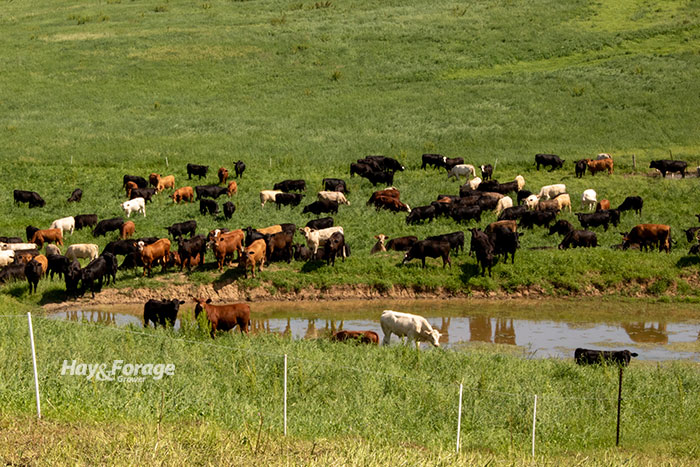
Water quantity may be top of mind as drought conditions persist across a large part of the country, but water quality issues deserve attention as well. Grazing livestock that drink from surface water sources may be at risk of toxicity this summer as temperatures rise and water levels fall.
In a news release from North Dakota State University Extension, Miranda Meehan writes that water quality is one of the limiting factors for many grazing operations. The livestock environmental stewardship specialist notes yearlings and calves can have improved gains of up to 0.24 and 0.33 pounds per day, respectively, when they have access to good-quality water.
With that said, surface water sources like creeks and ponds naturally contain salts comprised of dissolved solids and minerals. These components become much more concentrated when it is hot and dry because they do not evaporate with water.
Elevated concentrations of total dissolved solids (TDS) and sulfates can be toxic to livestock. Symptoms of toxicity include lower animal performance, abortion, blindness, central nervous system disorders, and possibly death. Meehan recommends monitoring TDS and sulfate levels throughout the grazing season with handheld TDS meters and sulfate test strips to ensure surface water is safe for animals to drink.
Total dissolved solids must be below 5,000 parts per million (ppm) for most classes of livestock. This value includes sulfate concentration, which must be less than 500 ppm for calves and less than 1,000 ppm for adult cattle. Submit water samples to a lab for additional analysis if screening indicates TDS exceeds 4,500 ppm and/or sulfates are greater than 800 ppm.
Beware of blooms
Cyanobacteria blooms, or blue-green algae blooms, also become problematic when it is hot and dry. They can be toxic to livestock as well as other wildlife and humans. Toxicity depends on the type and concentration of cyanobacteria, the amount of water ingested, and the species of animal consuming the water.
Visual observations are the best way to monitor cyanobacteria blooms. Meehan also suggests using cameras to monitor water sources since these blooms can develop quickly. If a bloom occurs, immediately move livestock away from the water source and send water samples to a lab to determine if the type of cyanobacteria present is toxic.
The consequences of drought conditions can go beyond a water shortage. Regularly monitor TDS and sulfate concentrations this summer and keep an eye on cyanobacteria blooms in surface water sources. Doing so will help prevent livestock from ingesting a dangerous amount of toxic components.

